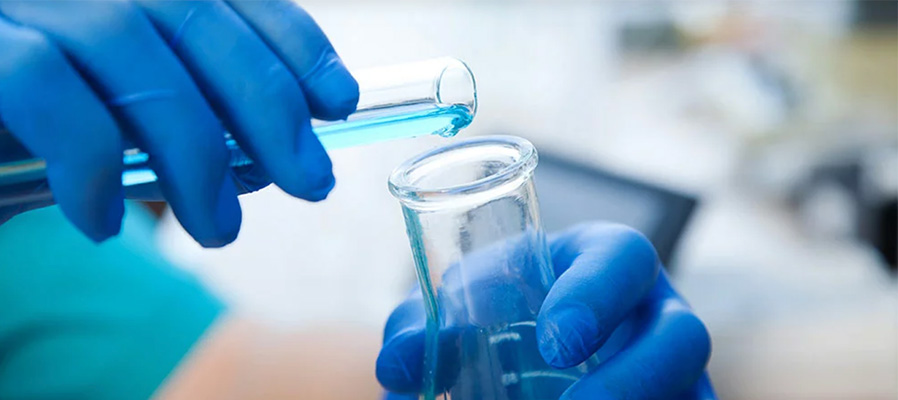How Whole Home Water Filtration Helps Mitigate PFAS Exposure

How Whole Home Water Filtration Helps Mitigate PFAS Exposure
According to a US Geological Survey (USGS), at least 45% of the country’s water contains PFAS. Additionally, the study notes there are over 10,000 types of PFAs, some of which cannot be detected by current tests. Importantly, the study collected samples directly from kitchen sinks across the country, which included drinking water from private wells and municipal supplies. With the study concluding that PFAS concentrations were similar between public water and private well water, all homeowners are left wondering how to reduce their exposure to PFAS.
At the Aqua Pump Company, we are committed to helping residents in our service area throughout Connecticut and western Massachusetts with clean drinking water. While many of our customers rely on well water, we have over 50 years of providing outstanding customer service and improved water quality to municipal and well water alike. In terms of PFAS exposure, then we have vast experience installing whole home water filtration systems, which are one of the most reliable ways to remove PFAS from your water.
But, what are PFAS, why are they dangerous and how can I keep my family safe? Those are the foundational questions to ask yourself as you learn more about PFAS.
What are PFAs?
According to the Environmental Protection Agency (EPA), PFAS, or per- and polyfluoroalkyl substances, are “man-made chemicals that include PFOA, PFOS, GenX, and many other chemicals.” Essentially, PFAS are chemical compounds that are applied to a large range of manufacturing processes because they include unique qualities, such as being resistant to heat, petroleum, and water. As a result, PFAS were added to a variety of common consumer products, such as:
- Cookware
- Food Packaging
- Stain Repellent Fabric
- Water Repellent Fabric
- Polishes
- Waxes
- Paints
- Cleaning Products
Due to their adoption within the manufacturing process of numerous industries, PFAS are not only in many common household products but also in the environment. In particular, PFAS entered the water and soil systems. As a result and according to the CDC, PFAS exposure potentially occurs in humans and animals via:
- Drinking contaminated municipal water.
- Drinking contaminated private well water.
- Consuming fish caught from contaminated water.
- Consuming food grown in contaminated soil
- Eating food packaged in PFAS.
- Eating food that was processed with equipment that contained PFAS.
- Using consumer products that contain PFAS.
Finally, and perhaps the most important for understanding why PFAS are dangerous is that they accumulate in your body over time. Simply put, PFAS do not break down in the body, so as people and animals gain exposure, more chemicals remain in their bodies.
What are the PFAS Health Effects?
As governmental organizations (like the EPA and CDC) and non-governmental organizations (like EWG) continue to study PFAS, the results seemingly point to many negative health effects based on increasing exposure. For example, the EPA established lifetime exposure guidelines from drinking water to 70 parts per trillion, which continues to change over time (generally to reduce the lifetime exposure amounts). Lifetime PFAS exposure limits are important because various studies continue to point to the same conclusion of yielding negative health effects.
Although more testing and studies will help scientists understand the lasting PFAS health effects, the Harvard University School of Public Health did produce a report noting the known health effects, such as:
- cancer.
- liver damage.
- decreased fertility.
- increased risk of asthma.
- increased risk of thyroid disease.
Plus, for families (or those planning families), the Rhode Island Department of Health shared PFAS information that included important caveats for pregnant women. The report included a potential list of health issues for pregnant women and their children due to PFAS exposure (and the related chemicals), which include:
- developmental effects in infants.
- lower a woman’s chance of getting pregnant.
- increase a woman’s blood pressure during pregnancy.
- lower infant birth weights.
- interfere with the body’s natural hormones.
- increase cholesterol levels.
- affect the immune system.
- increase the risk of cancer.
How Can I Limit My PFAS Exposure?
For better or worse, daily activities like showering, bathing, and swimming do not pose a major threat to exposure to PFAS chemicals. As a result, the main ways to limit PFAS exposure rely on understanding your water supply. To start, test your water for PFAS contamination. When you have more knowledge about your own water supply, whether it be from a public water supply or a private well, you can then take the next steps to install a proper home water filtration system that will eliminate these chemicals from your water.
While there are a limited number of PFAS studies, the results show water filtration systems mitigate exposure levels. For example, a joint CDC and Minnesota Department of Health study showed the impact of water filtration systems on PFAS levels in the bloodstream. The study occurred in the mid-2000s following the installation of a water filtration system. The study determined that PFAS (and related chemicals) decreased in long-term residents after the water filtration system was implemented.
For homes with PFAS exposure, then a reverse osmosis filter or carbon-based home water filter protects your family from chemical exposure. It is important to note that not every water filtration system or device protects against PFA chemicals, so if your water supply contains PFAS discuss this directly with your water technician.
-
PFAS in Your Water
Next, do not boil your water. Generally, boiling removes many common water contaminants, but NOT PFAS! In fact, boiling water with PFAS can concentrate the chemicals. The simplest method to ensure clean drinking water is to buy bottled water that explicitly tests for PFAS. Additionally, homeowners with PFAS exposure in their water should be mindful that daily activities, such as showering, bathing and cleaning dishes or doing laundry do not pose major risks. However, as a precaution, reducing shower/bathing times and/or limiting time in lakes or streams makes sense for some people as well.
-
PFAS in Your Food
Finally, understand where your food comes from. For example, if you maintain a home garden, then water your fruits and vegetables with a clean water supply. Based on the type of PFAS, these can be flushed from the soil, which helps ensure safe produce. Also, always wash the produce (or peel root vegetables) as another safety measure. Likewise, if you buy locally and are able to ask the farmers for more information about the water and soil, that helps ensure you consume safe food.
Related, avoid non-stick pots and pans while cooking. PFAS chemicals are heavily used in these products (which create the non-stick coating). As a result, stainless steel cookware offers a safe option. Similarly, look at the labels of your cleaning products and avoid products with these chemicals.
-
PFAS and Whole Home Water Filtration
Whole home water filtration systems can effectively reduce exposure to PFAS by removing these “forever chemicals” from your household’s water supply before consumption or usage.
- They typically use a two-stage filtration process with a sediment pre-filter to remove particulates, followed by an activated carbon filter or reverse osmosis membrane to remove PFAS compounds.
- The carbon filters or reverse osmosis membranes are designed and certified to remove up to 98% of PFOA and PFOS, which are two of the most common and hazardous PFAS compounds. Some systems are also certified for reduction of additional PFAS like PFNA, PFHxS, PFBS and GenX.
- By installing at the home’s main water line, these systems filter all water entering the home, reducing PFAS exposure from every tap used for drinking, cooking, bathing, and cleaning.
- Large (20-inch) carbon filters provide higher capacity and longer life (up to 6 months) compared to smaller countertop filters before replacement is needed.
As we learn more about PFAS, the steps to avoid these chemicals may change over time. We face a lot of health risks, so learning and understanding about the food we eat and the products we use to clean our homes will continue to offer the first line of defense. From a water quality side, testing your water remains the starting point. At the Aqua Pump Company, we truly believe in clean water for everyone. If you would like to test your water supply or install a whole home water filter, be sure to reach out to the Aqua Pump Company to schedule an appointment. When you are informed about your water, you can better ensure your family’s health and happiness.


